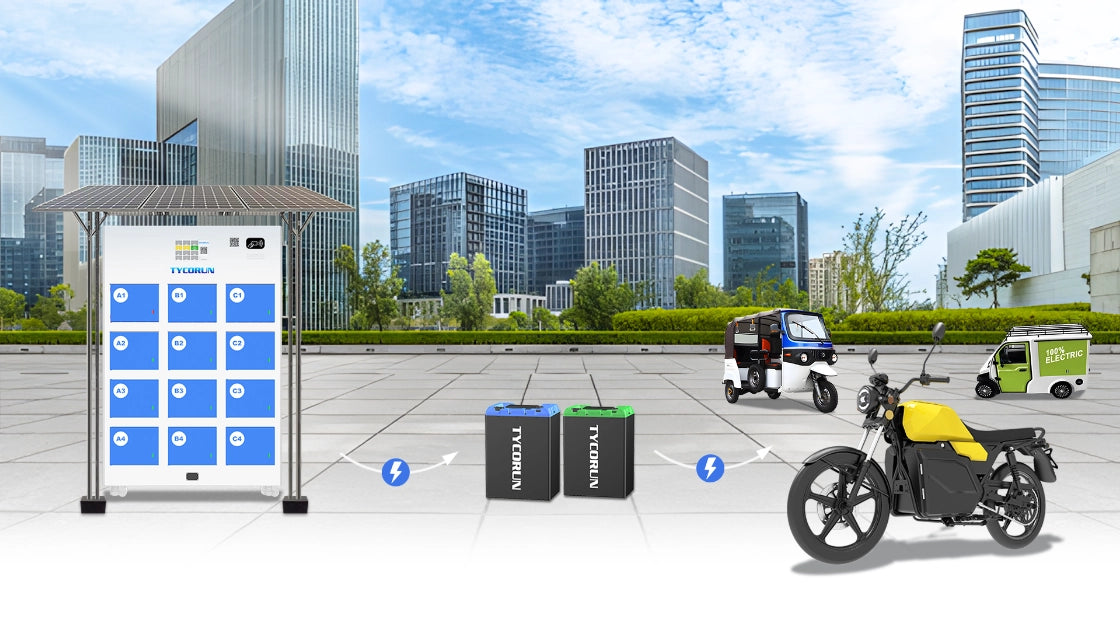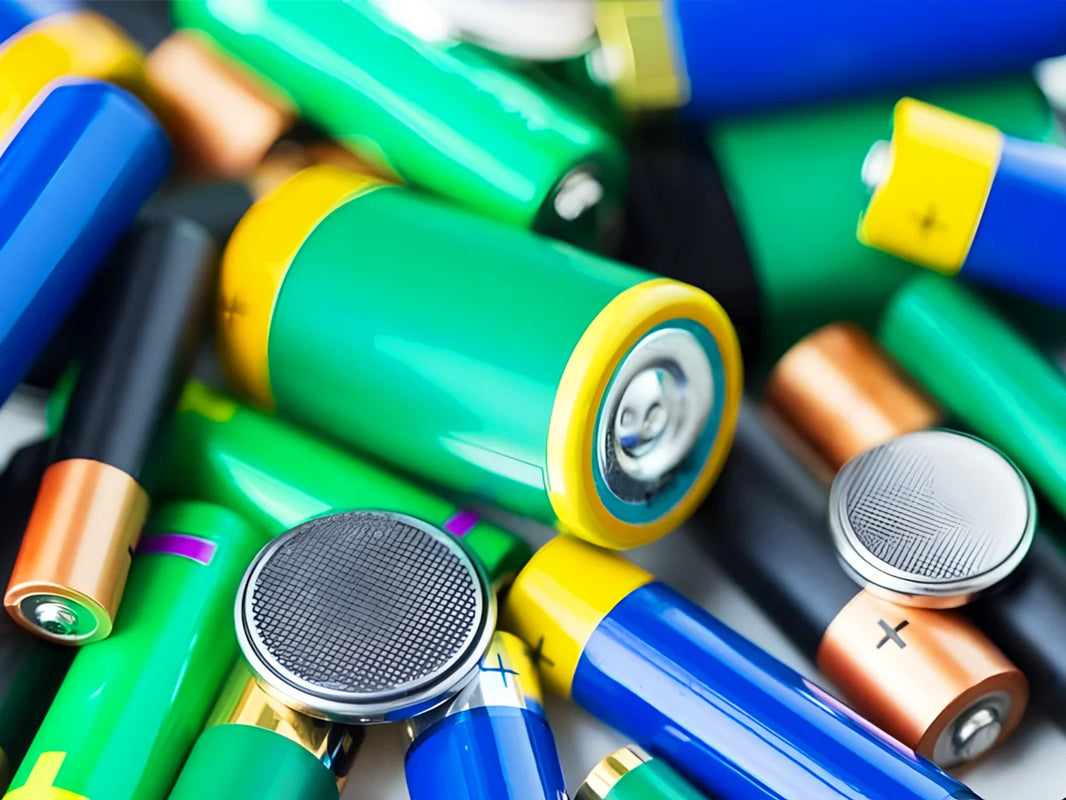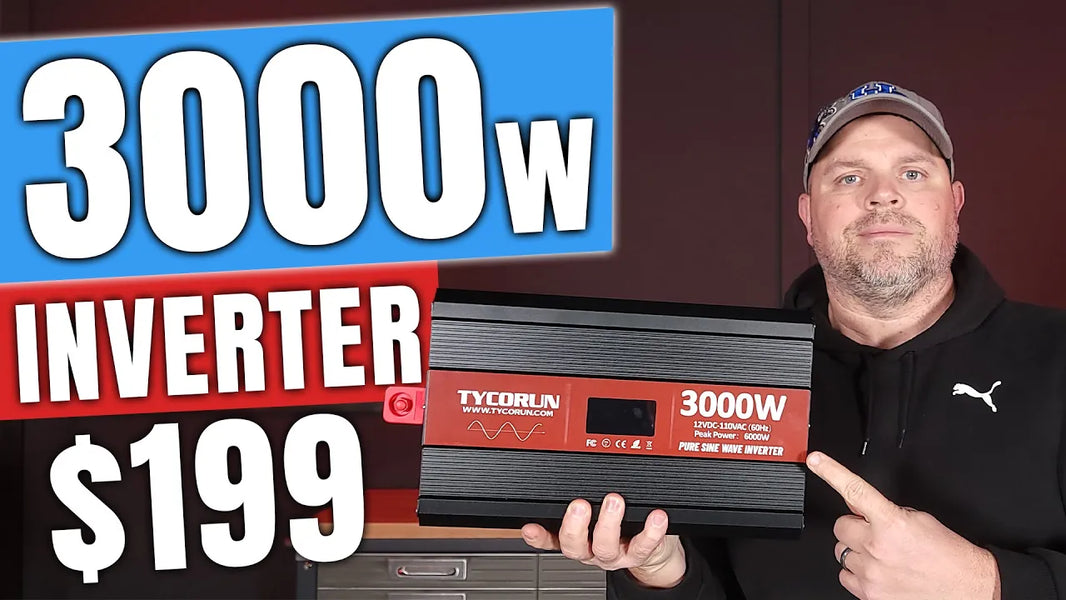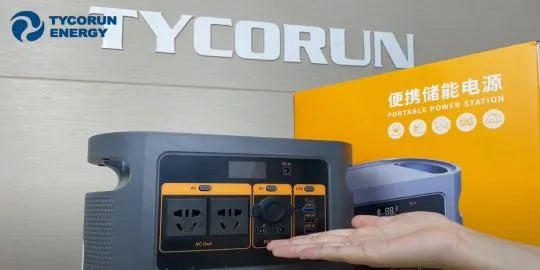
Main content:
- What Does CCA Mean on a Battery?
- Why CCA Is Important?
- Using a Lower vs. Higher CCA Battery
- What is a Good Amount of CCA?
- How to Choose the Right Battery Based on CCA
- How to check CCA on battery?
- CCA vs MCA vs HCA - What’s the Difference?
- Do Batteries Lose CCA Over Time?
- FAQs about CCA on a Battery
- Conclusion
Winter is a struggle, believe it that is also push your engine to work hard. Because when cold hits and your engine hard to start, the real test begins for the battery. But CCA or Cold Cranking Amps is one of the most critical battery performance metrics that determines whether your car will start reliably in winter.
Understanding what cca means on a car battery helps driver and any people that choose the right battery for climate, engine size, and vehicle type. Especially in lithium-ion batteries are on the road.
What Does CCA Mean on a Battery?
CCA, or Cold Cranking Amps, is a measure of a car battery's ability to start an engine in cold temperatures. Specifically, number of amps a battery can deliver for 30 seconds at -18 Celsius while maintaining 7.2 volts.
In a winter, the battery's chemical reaction slows down and the engine oil becomes thicker. That situation makes the engine harder to start, it needs more power from the battery. Higher CCA rating means the battery can deliver more starting power in freezing conditions.
So, what does CCA mean on a car battery? Simple explanation is:
The higher CCA, the better battery performs in cold starts, especially in winter climates.
If you are driving in colder regions, choosing a battery with high CCA rating can help you to ensure your engine starts reliably even on freezing morning.
Why CCA Is Important?

CCA (Codl Cranking Amps) is crucial not only for traditional gasoline vehicles but also for electric vehicles (EVs) that use lithium-ion batteries. In cold environments, battery performance drops for both types of vehicles, while the current required to start increases. Especially in winter, EVs need extra power to heat the lithium battery itself, as well as the seats steering wheel, and heating system.
For EV's equipped with a 12V system, if the CCA is too low, critical systems may fail to start-even though the main drive system doesn't directly rely on this battery. Cold temperatures cause the battery's electrolyte to thicken and slow ion movement, reducing available current. Meanwhile, engin oil thickens, increasing resistance and requiring more torque from the starter motor, which places higher current demands on the battery.
Vehicles with large engines-such as ambulances, police cars, buses, and trucks- require even higher current, Insufficient CCA can lead to failed starts and serious consequences.
In summary, understanding what does CCA mean on a battery helps highlight why a high CCA rating ensures reliable cold-weather starting, prevents power shortages during startup, improves system stability, and extends battery life. This makes CCA a critical factor when choosing a battery for cold climates.
Using a Lower vs. Higher CCA Battery

Generally batteries with higher CCA ratings are better suited for cold climates and large-engine vehicles like SUVs or performance cars, which demand more starting current-especially those equipped with complex electronic systems.
However, what does CCA mean on a battery? It's important to choose a battery that matches the manufacturer's recommended level usually won't harm your vhicle; in fact, they can improve starting performance in cold weather, reduce battery strain, and extend lithium ion battery life.
The downsides high CCA batteries include higher cost and larger size. In older or smaller vehicles, they might not charge fully, which can shorten battery life. In warmer climates, a high CCA battery may also be unnecessarily oversized.
Low CCA batteries often struggle starting, causing voltage drops that may disrupt ecteronic systems and increase the risk of battery failure. This issue is more sever in diesel engines, which require even higher current to start. In extreme cold, a low CCA battery might fail to start the engine altogether.
In summary, selecting the right CCA rating is crucial to ensure reliable starts and maximize battery longevity. Blindly choosing a higher CCA battery without consideration can sometimes have drawbacks.
What is a Good Amount of CCA?
Talking about numbers is not only answering what cca means on a car battery. Every EV has different requirements for CCA, depending on the type of vehicle, engine size, compression ratio, operating climate, and electrical load. The right CCA rating ensures reliable engine starting performance especially under winter conditions. But in general, it may has several classification:
Passenger Cars EV or Hybrid Vehicles
The main battery of high voltage lithium-ion is 400V-800V. With 12V lithium (or lead-acid) to boot computers, relays, safety systems, and accessories. Recommended auxiliary CCA is around 300-500, depending on the vehicle.
EV’s don’t use CCA for ‘engine cranking’ since there is no internal combustion but the 12V system needs high current. Because EV need to burst to power HVAC compressors during boot; initialize the battery management systems (BMS); engage relays and contactors; and activate drive control units and onboard diagnostics.
Cold temperatures slow ion movement and increase internal resistance, even in lithium batteries. A battery with insufficient CCA may fail to activate the BMS or contactors, rendering the EV unresponsive.
While in freezing weather lithium batteries need to:
- Preheating circuits like self-heating LifePO4 or external thermal management
- Higher CCA ratings to support these startup loads.
- Insulation and energy reserves for auxiliary heating such as steering, wheel, seats, and defroster.
Lithium Starter Batteries in Motorcycle
You have to know what does the cca mean on a battery in a motorcycle. Because for a motorcycle with lithium batteries, it will be perfect if the amount CCA is around 150-300 (some motorcycle brands possibly 120). Because lithium iron phosphate (LiFePO4) batteries can deliver higher peak currents than lead-acid of the same size.
CCA ratings are often lower than real performance due to different chemistry behavior - they maintain voltage better under load. In cold starts, lithium batteries must warm themselves via internal resistance before reaching full power.
Lithium Starter Batteries in Boat or Marine Transportation
Marines with green power energy need outboard starters, somar. trolling motors, and 12V house system from LiFePO4 batteries power. Like EV’s lithium’s BMS must power up reliably in cold. Marines with lithium batteries need enough peak current to overcome inrush demand from starters, pumps, and lightning systems.
Small Equipment
What does the cca mean on a battery in small equipment? Small equipment such as lawn mowers, UTVs, and ATVs frequently operate in cold or mountainous areas. For these, lithium batteries with 100=250 CCA are generally sufficient.
LiFePO4 batteries offer advantages including fast voltage recovery, longer shelf life, and superior cranking power relative to weight. In cold environments batteries should be appropriately rated or equipped with internal heating elements.
Truck
Most trucks on the market using diesel commercial vehicles are 12V or 24V starter batteries. But for LiFePO4 options are available as drop-in replacements for lead acid systems including fleet, military, or cold-weather use cases.
- Light duty trucks use gasoline or small diesel need 600-800 CCA equivalent
Heavy duty diesel trucks or semi trucks, dump trucks, ect) need 900-1200+ CCA equivalent. - Lithium batteries often provide lower CCA ratings on paper, but they maintain voltage stability better under load. Which means a lithium battery with 800 CCA performs like a 1000 CCA in the cranking test.
But if you have a truck that operates in harsh winter, a lithium battery with lower CCA might still fail if you are not thermally managed- even if it has better discharge properties in warm temperature.
How to Choose the Right Battery Based on CCA

The highest number is not the only consideration to choose a right battery based on CCA. Matching the battery's CCA with your engine's starting current demand, environmental conditions, battery chemistry, and electrical system load is essential. Every person should know how to technically determine ideal CCA:
- Knowledge about vehicle’s CCA requirement. This is the most important key and you can see by vehicle’s manual book or battery label under the hood. The minimum required CCA is based on engine size, including displacement and number of cylinders. Also, diesel engines require higher cranking current than gasoline engines. Other factors include compression ratio and starter motor torque demand.
- Should consider climate and operating temperature. CCA ratings are measured at 0°F (-18°C) so this spec is especially critical for vehicles in cold climates. For a region with sub-zero temperatures, choose a battery with 15-25% higher CCA than minimum to compensate. It will be useful for slower chemical reaction rates, thicker engine oil, and greater resistance in electrical circuits. In every 10°C below freezing battery performance can drop by 20% or more.
- Evaluate battery chemistry. Lithium batteries often lower-rated CCA on paper, but maintain higher voltage under load which real world cranking can outperform lead-acid at similar ratings.
Check electrical accessory load. Modern vehicles are complex with electrical demands such as infotainment systems, heated seats/ steering wheels, and high output lighting. Vehicles with higher parasitic ads at startup need extra CCA headroom to prevent voltage drop during ignition.
- Battery group size and fitment. Because even a battery has high CCA, it must physically fit the battery tray and terminals, it must match the vehicle’s layout. And don’t forget to choose the ideal BCI Group Size to ensure mounting and proper cable connection.
How to check CCA on battery?
Here is how to accurately assess the CCA or equivalent cranking performance of a lithium battery. Understanding what does cca mean on a battery will help you to know characteristics before testing. Testing the CCA performance of a lithium battery requires a thorough understanding of its characteristics, as lithium batteries can maintain relatively stable voltage even under high current discharge.
Common testing methods include:
Using Conductance Tester or Pulse Load Tester that supports lithium battery mode, which are suitable for quickly assessing battery health and CCA capability.
Ensure the battery is fully charged before testing, and conduct the test at temperatures above O Celsius to prevent the Battery Management System (BMS) from entering protection mode, which could affect the accuracy of test results. Another method involves using a programmable DC load tester to simulate a specific current discharge over a set duration, monitoring the lithium-ion battery voltage drop and determining battery performance based on standards.
For example, in a 12V system the voltage should be maintained above 9.6V. High-performance lithium batteries often maintain voltages above 10V even during high current testing.
CCA vs MCA vs HCA - What’s the Difference?
After understanding what does cca mean on a battery and what does cca mean on a car battery at least you have to know Marine Cranking Amps (MCA), and Hot Cranking Amps (HCA). Those are all industry-standard measurements used to describe a battery's ability to deliver high current under specific conditions. Differences in the test temperature, which significantly affects the battery’s performance due to chemical behavior at varying thermal conditions.
Ratings measure for three metrics are refer to the maximum current (in amperes) that a battery can deliver for 30 seconds while maintaining a minimum terminal voltage of 7.2 for a 12 V battery - but the temperature at which the test is performed changes the result.
| CCA (Cold Cranking Amps) | MCA (Marine Cranking Amps) | HCA (Hot Cranking Amps) | |
|---|---|---|---|
| Test Temperature | 0°F (-18°C) | 21°F (0°C) | 80°F (27°C) |
| Use Case | cars, trucks, diesel engines in winter or cold climates | Boats, outboards, mild climate vehicles. | warm-climate vehicles. |
| Technical Definition | Number of amps the battery can deliver for 30 seconds at 0°F while maintaining >7.2V | Number of amps the battery can deliver at freezing (around 32°F) for 30 seconds while maintaining >7.2V | Number of amps can deliver at 80°F for 30 seconds at >7.2V. |
| Key points | As the most conservative rating and is critical for cold-weather engine starting. | Typically 20-25% higher than CCA ratings for the same battery, because in warmer temps batteries perform better. | Least rigorous from these three kinds, often not included in serious automotive specs. Higher temperature improves electrochemical activity, meaning the battery looks better on paper with HCA values. |
Do Batteries Lose CCA Over Time?
The answer is yes. If you understand what CCA means on a battery, it won't be surprising that batteries lose Cold Cranking Amps (CCA) as they age. Various factors contribute to this decline, including chemical aging, increased internal resistance, and degradation of active materials inside the battery. Both chemical and physical deterioration reduce a battery's ability to deliver high discharge currents, especially at low temperatures.
Key factors causing CCA loss in lithium-ion batteries include:
- Increased internal resistance: repeated discharge cycles cause the solid electrolyte interphase (SEI) layer on the anode to thicken. This SEI growth increases impedance, reducing the battery's ability to rapidly deliver high current. The higher internal resistance leads to faster voltage drops under load, diminishing the battery's cranking performance.
- Anode and cathode degradation: Cathode materials can develop microcracks, while lithium planting may occur on the anode during high-load or cold charging conditions. These issues cause capacity fade and decreased conductivity, which negatively impact peak discharge performance over time.
- Electrolyte breakdown and gas formation: Repeated high current draws or elevated temperatures can degrade the organic electrolyte solvents, producing gas that increases internal pressure. In prismatic or pouch cells, gas swelling can distort cell geometry, restricting current flow paths an reducing discharge output.
- Temperature sensitivity: Lithium batteries rely on ion mobility within the electrolyte, which slows significantly aat low temperatures, furter reducing current delivery capability.
FAQs about CCA on a Battery
We understand that people that just learn about what does cca mean on a battery also still questioning many things about battery. EV cars or vehicles with lithium power is a modern invention that still takes time to develop, and not everybody has it. So might be you still questioning about CCA such as:
Is 750 cold cranking amps good?
The case is not only about numbers. If someone asks that, maybe 750 CCA is a high rating because this level is suitable for larger displacement engines such as for pickup trucks, diesel engines, performance vehicles, and emergency response or commercial fleets.
750 CCA lithium batteries are typically used LiFePO4 or NMC (Nickel Manganese Cobalt) cells, optimized for high-current discharge. They have lower internal resistance, so lithium batteries can deliver instant torque even with lower mass. But 750 CCA in lithium often outperforms equivalent CCA in lead-acid.
Is a 150 CCA battery good?
If you read what does cca mean on a battery from previous subheading, you can see that 150 CCA number is good for motorcycles, lawn mowers, small ATV or powersports vehicles. 150 CCA not for cars or trucks because vehicles with fuel injection, ECU, sensors and electronic starters typically need at least 300-400 CCA.
Will too many cold cranking amps hurt my car?
Of course not. Because using a lithium battery with higher CCA than required won’t damage your car. Because modern alternators and BMS regulated lithium only supply what the engine needs. They are not push current the load or starter motor
Conclusion
Chemically superior energy density and voltage stability from lithium batteries is not enough, they need to meet CA equivalent demands during cold starts, auxiliary system, boot-ups, or momentary high-current loads.
LiFePO4 stimulates CCA ratings to match drop-in replacement expectations for lead-acid systems. But LiFePO4 maintains voltage without significant voltage sag, offering better real-world cold performance -when sized and heard properly not like lead-acid.
If you understand what does cca mean on a battery you have to choose the battery in the right way. Which you have to meet or slightly exceed your vehicle’s recommended CCA, pay attention to climate, engine size, battery tray and charging system.
Related articles: battery capacity loss, lithium ion batteries production, all solid state batteries
















